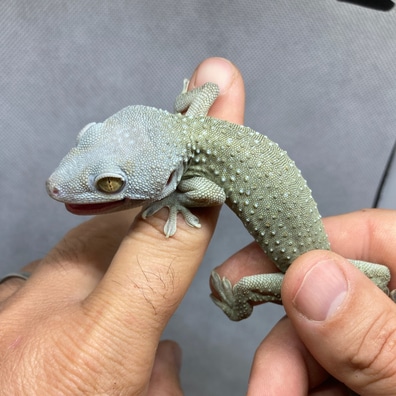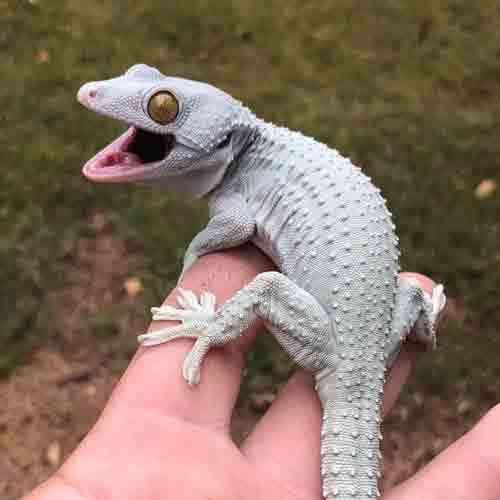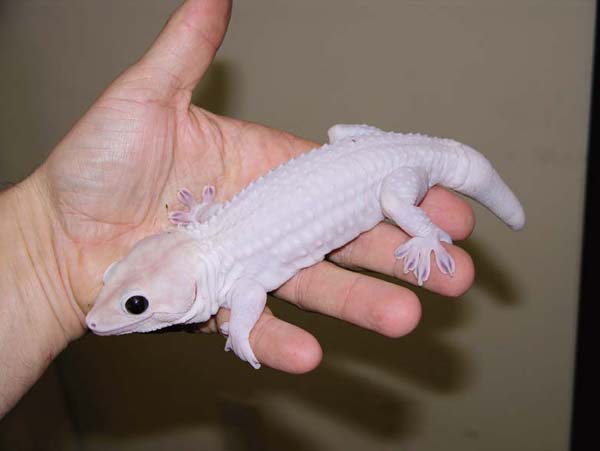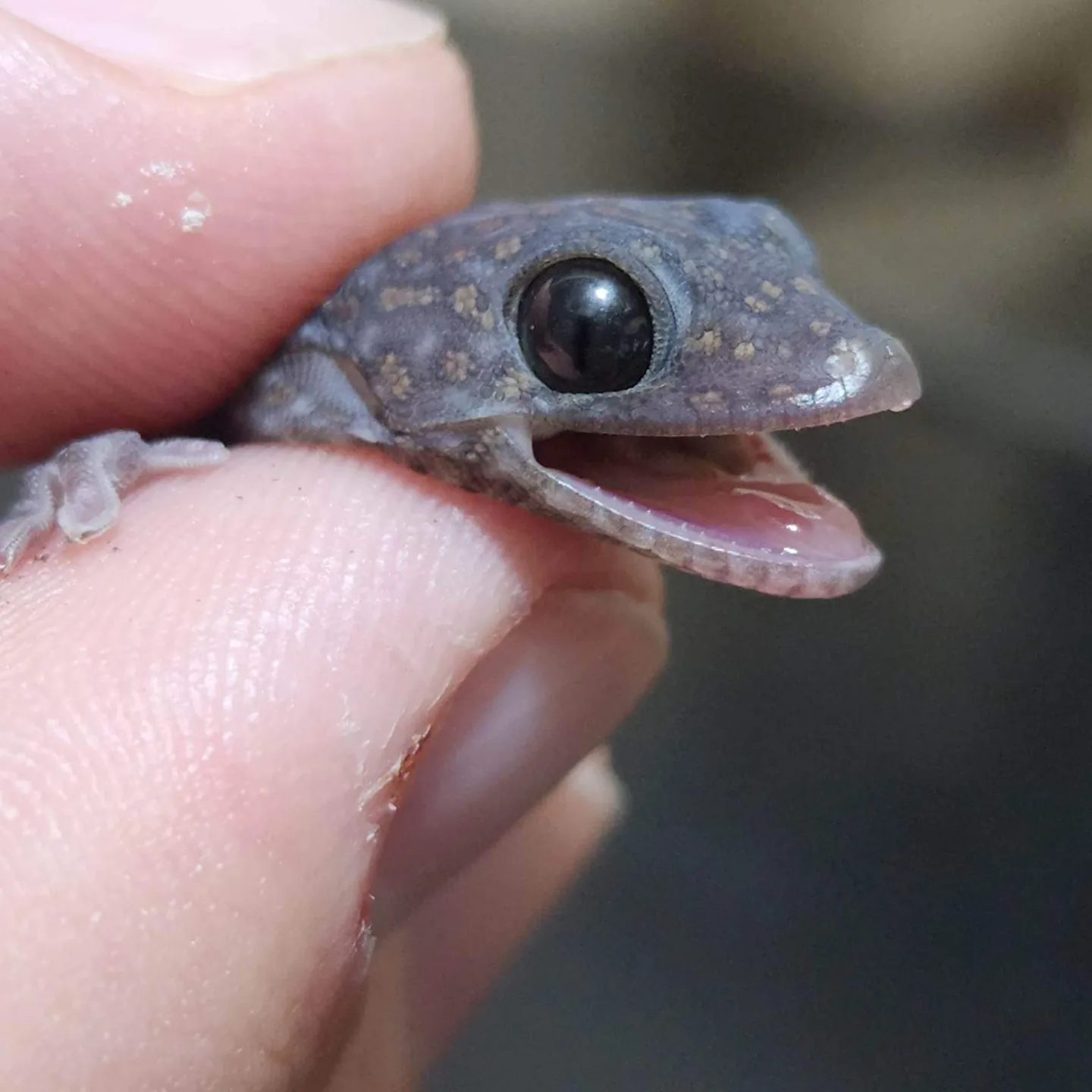Tokay Gecko Morphs
The tokay gecko is an incredible gecko species that comes in quite a few different colors and patterns. With less popularity then other species, tokay morphs are not known very well by the general public and often get miss identified. In this tokay gecko morph guide we will be going over every morph that is currently in the U.S and available.
The Normal Tokay

[Example of a normal tokay gecko]
The normal tokay gecko is identified as a tokay with a blue base with red/orange spots that randomly appear on the gecko. the spots can range in color from a deep red to light orange which will all fall into the same category as normal morph.
Reduced Pattern Tokay Gecko

[Example of a reduced pattern tokay gecko]
The reduced pattern tokay (as the name implies) is an incomplete dominant morph that reduces the pattern of the gecko. This morph can be identified as a gecko with a blue head, green base with little to no spots, only leaving the white baring. In this morph it is more sought after to have a reduced pattern with no spotting, ones that still have orange spots are seen as a lesser quality version of the morph.
The patternless Tokay Gecko

[Example of a patternless tokay gecko]
The patternless tokay gecko (again as the name suggests) is a recessive morph that takes away any pattern on the gecko, leaving it with a pattternless body. There are a few different variants of the patternless gene for tokays, we will break down each one so you guys know exactly which gecko you are getting!

[Example of blue headed green patternless tokay gecko]
The blue headed green patternless tokay is a variant that is pretty self explanatory, its a tokay gecko with a blue head and green body. This morph is also being referred to as an olive patternless tokay by some and BHG to others.

[Example of powder blue patternless]
The powder blue patternless tokay gecko is identified by having a ice blue color that matches both on its head and body. Due to cross breeding the powder blue to the bhg, the powder blue variant is harder to come by and attempted breeding may result in powder blues producing blue headed greens.
The Granite Tokay Gecko
[Example of a granite tokay gecko]
The granite tokay gecko is identified by having a dark grey/charcoal base and black spots. This morph is difficult to reproduce and is currently not being done in any big number. Lucky foot geckos has done great work in proving out the granite morph and has been able to reproduce the morph a few times. So what makes it so difficult? Well it seems to not be as simple as a recessive or codom gene. The best way to reproduce the granite would be to pair 2 visuals together, grow out their babies and repair them to a visual parent and then well.. wait. All the geckos will hatch out looking normal, however within a time frame that has been recorded so far of 6 months to 2 years the gecko will slowly change into a granite. Thats right, the gecko will hatch out normal and then slowly its spots will change from orange to black and its base will darken. Absolutely incredible!, but it doesn't stop there, theres one more step to make this even crazier. Which leads us to our next morph.
The Pied/Leucistic Tokay Gecko
[Example of pied tokay gecko]
The pied tokay gecko is identified as a tokay with a white body and black eyes. the pied tokay may have some patches that aren't white or it will look completely patternless. Not much is known of the pied tokay gecko, but with work that has been done we know one thing, it comes from the granite gene. As we went over in the previous morph, the granite is a normal baby that changes slowly into a granite. This can go one step further with the granite changing again into a pied. currently i have only seen this happen once from lucky foot geckos. To my current knowledge she has done it a couple times. A morph you will rarely to never find captive bred, with imports still costing thousands, i believe it will be a bit (and a dedicated person) to work further with the granite/pied gene to give us more information on how it works.
The Super Red Tokay Gecko
[Example of super red tokay gecko]
The super red tokay is identified as a gecko that is really (and we mean really) red. there a few different lines for this morph, ranging from a gecko that is covered in red spots to ones like i have in my personal collection, a completely red tokay gecko. This is a co-dom morph that makes (what the name suggests) a really red gecko .
Platinum Tokay Gecko
[Example of a platinum tokay gecko]
The platinum tokay gecko is a recessive trait that can be characterized by having a silver base with yellow spots and platinum like eyes. Produced by CPX Reptiles, as far as i know platinum is one of the only yellow spotted morphs that have been proven out. One interesting thing to note of the platinum is it is one of few morphs that have a visual marker in its het form. Though this wont happen every time, babies that are het will show yellow spots, while not having the silver base or platinum eyes.
Candy Dot Tokay Gecko
[Example of candy dot tokay gecko]
The candy dot tokay gecko is a recessive morph that can be characterized by 3 main things. Instead of spots being on the gecko randomly, the spotted pattern aligns itself into what looks like the 90's candy candy dots (hence the name) the white baring also disappears from the pattern. The eyes can differ from being very dark to black and lastly there will be stripe down the tail. Thanks to the combined work of cpx reptiles and lucky foot geckos we have the first united states captive born candy dot produced in 2024.
[USCB candy dot tokay gecko]
Diablo Tokay Gecko
[Example of diablo tokay gecko]
The diablo tokay gecko is a recessive morph that is characterized by having a lavender base, yellow spots and black eyes. unlike the candy dot morph, the diablo retains its white baring with it not being a pattern changing gene. Thanks to m95 genetics we have our first united states captive bred diablo in 2022.
[First USCB diablo tokay gecko]
Green Galaxy Tokay Gecko
[Example of green galaxy tokay gecko]
The green galaxy is an interesting tokay gecko due to it (by my understanding) not being an actual morph. Instead the green galaxy are "odd balls" that were thrown from a specific pair of geckos produced from home grown scales. The green galaxy can range widely in its appearance, due to it not being a genetic mutation. From what i have seen they are a gecko with a green body and blue head with the spots being reduced in size to small dots. The white barring as well seems to break up into a funky random pattern. Green galaxies can be reproduced by using two visuals. I am unsure if this pattern can be reproduced by using a visual to "het", but will be attempting this in 2024 to see if anything comes from it. green galaxy paired to a normal will only produce normals from my experience.
More morphs coming soon.












